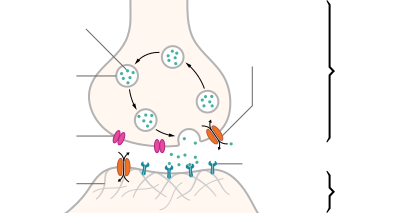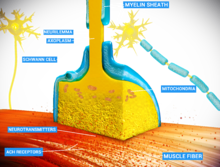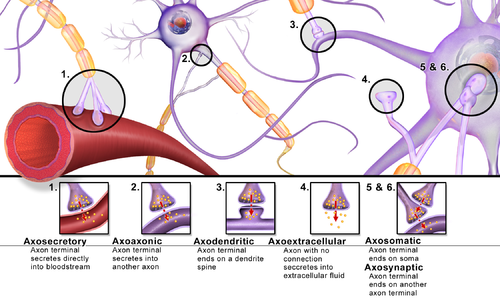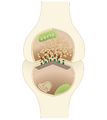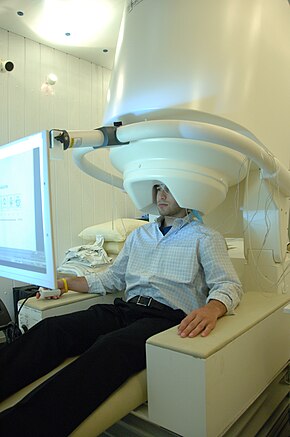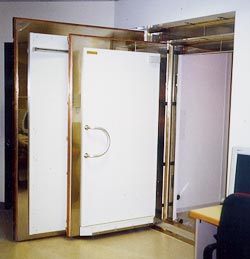Grief is a multifaceted response to loss, particularly to the loss of someone or something that has died, to which a bond or affection was formed. Although conventionally focused on the emotional response to loss, it also has physical, cognitive, behavioral, social, cultural, spiritual and philosophical dimensions. While the terms are often used interchangeably, bereavement refers to the state of loss, and grief is the reaction to that loss.
Grief is a natural response to loss. It is the emotional suffering one feels when something or someone the individual loves is taken away. The grief associated with death is familiar to most people, but individuals grieve in connection with a variety of losses throughout their lives, such as unemployment, ill health or the end of a relationship.[1] Loss can be categorized as either physical or abstract,[2] the physical loss being related to something that the individual can touch or measure, such as losing a spouse through death, while other types of loss are abstract, and relate to aspects of a person’s social interactions.[3]
Grieving process
A grief-stricken soldier is comforted by a fellow soldier after a friend is killed in action during the Korean War.
A family mourns during a funeral at the Lion's cemetery during the Siege of Sarajevo in 1992.
Recently[when?], there has been a high level of skepticism about the universal and predictable “emotional pathway” that leads from distress to “recovery” with an appreciation that grief is a more complex process of adapting to loss than stage and phase models have previously suggested. The Two-Track Model of Bereavement, created by Simon Shimshon Rubin in 1981, is a grief theory that provided deeper focus on the grieving process. The model examines the long-term effects of bereavement by measuring how well the person is adapting to the loss of a significant person in their life. The main objective of the Two-Track Model of Bereavement is for the individual to “manage and live in reality in which the deceased is absent” as well as returning to normal biological functioning. (Malkinson, 2006)
Track One is focused on the biopsychosocial functioning of grief. This focuses on the anxiety, depression, somatic concerns, traumatic responses, familial relationships, interpersonal relationships, self-esteem, meaning structure, work, and investment in life tasks. Rubin (2010) Points out, “Track 1, the range of aspects of the individuals functioning across affective, interpersonal, somatic and classical psychiatric indicators is considered”(Shimshon 686). All of the terms listed above are noted for the importance they have in relation to people’s responses to grief and loss.
The significance of the closeness between the bereaved and the deceased is important to Track 1 because this could determine the severity of the mourning and grief the bereaved will endure. This first track is the response to the extremely stressful life events and requires adaption along with change and integration.The second track focuses on the ongoing relationship you have with the deceased. Track two mainly focuses on how the bereaved was connected to the deceased and on what level of closeness was shared. The stronger the relationship to the deceased is will lead to a greater evaluation of the relationship with heightened shock. Track two brings up both the positive and negative memories that you shared with the deceased and the degree of emotional involvement you shared causing reflection.
Any memory could be a trigger for the bereaved, the way the bereaved chose to remember their loved one, and how the bereaved integrate the memory of their deceased into their daily lives.
Ten main attributes to this track include; imagery/memory, emotional distance, positive effect, negative effect, preoccupation with the loss, conflict, idealization, memorialization/transformation of the loss, impact on self-perception and loss process (shock, searching, disorganized) (Rubin, 1999). An outcome of this track is being able to recognize how transformation has occurred beyond grief and mourning (Rubin, 1999). By outlining the main aspects of the bereavement process into two interactive tracks, individuals can examine and understand how grief has affected their life following loss and begin to adapt to this post-loss life.The Model offers a better understanding with the duration of time in the wake of one's loss and the outcomes that evolve from death. By using this model, researchers can effectively examine the response to an individual’s loss by assessing the behavioral-psychological functioning and the relationship with the deceased. [4]
The authors from Whats Your Grief?, Litza Williams and Eleanor Haley, state in their understanding of the clinical and therapeutic uses of the model:
“in terms of functioning, this model can help the bereaved identify which areas of his/her life has been impacted by the grief in a negative way as well as areas that the bereaved has already begun to adapt to after the loss. If the bereaved is unable to return to their normal functioning as in before loss occurred, it is likely they will find difficulty in the process of working through the loss as well as their separation from the deceased. Along the relational aspect, the bereaved can become aware of their relationship with the deceased and how it has changed or may change in the future” (Williams & Haley, 2017).[5]“The Two-Track Model of Bereavement can help specify areas of mutuality (how people respond affectivity to trauma and change) and also difference (how bereaved people may be preoccupied with the deceased following loss compared to how they may be preoccupied with trauma following the exposure to it)” (Rubin, S.S, 1999).[6]
Reactions
Crying is a normal and natural part of grieving. It has also been found, however, that crying and talking about the loss is not the only healthy response and, if forced or excessive, can be harmful.[7][8] Responses or actions in the affected person, called "coping ugly" by researcher George Bonanno, may seem counter-intuitive or even appear dysfunctional, e.g., celebratory responses, laughter, or self-serving bias in interpreting events.[9] Lack of crying is also a natural, healthy reaction, potentially protective of the individual, and may also be seen as a sign of resilience.[7][8][10] Science has found that some healthy people who are grieving do not spontaneously talk about the loss. Pressing people to cry or retell the experience of a loss can be harmful.[8] Genuine laughter is healthy.[7][10]Five identities of grievers
Berger identifies five ways of grieving, as exemplified by:[11]- Nomads: Nomads have not yet resolved their grief and do not seem to understand the loss that has affected their lives.
- Memorialists: This identity is committed to preserving the memory of the loved one that they have lost.
- Normalizers: This identity is committed to re-creating a sense of family and community.
- Activists: This identity focuses on helping other people who are dealing with the same disease or with the same issues that caused their loved one's death.
- Seekers: This identity will adopt religious, philosophical, or spiritual beliefs to create meaning in their lives.
Bereavement science
Grief can be caused by the loss of one's home and possessions, as occurs with refugees.
Bonanno's four trajectories of grief
George Bonanno, a professor of clinical psychology at Columbia University, conducted more than two decades of scientific studies on grief and trauma, which have been published in several papers in the most respected peer-reviewed journals in the field of psychology, such as Psychological Science and The Journal of Abnormal Psychology. Subjects of his studies number in the several thousand and include people who have suffered losses in the U.S. and cross-cultural studies in various countries around the world, such as Israel, Bosnia-Herzegovina, and China. His subjects suffered losses through war, terrorism, deaths of children, premature deaths of spouses, sexual abuse, childhood diagnoses of AIDS, and other potentially devastating loss events or potential trauma events.In Bonanno's book, The Other Side of Sadness: What the New Science of Bereavement Tells Us About Life After a Loss (ISBN 978-0-465-01360-9), he summarizes his research. His findings include that a natural resilience is the main component of grief and trauma reactions.[7] The first researcher to use pre-loss data, he outlined four trajectories of grief.[7] Bonanno's work has also demonstrated that absence of grief or trauma symptoms is a healthy outcome, rather than something to be feared as has been the thought and practice until his research.[9] Because grief responses can take many forms, including laughter, celebration, and bawdiness, in addition to sadness,[10][12] Bonanno coined the phrase "coping ugly" to describe the idea that some forms of coping may seem counter intuitive.[9] Bonanno has found that resilience is natural to humans, suggesting that it cannot be "taught" through specialized programs[9] and that there is virtually no existing research with which to design resilience training, nor is there existing research to support major investment in such things as military resilience training programs.[9]
The four trajectories are as follows:
- Resilience: "The ability of adults in otherwise normal circumstances who are exposed to an isolated and potentially highly disruptive event, such as the death of a close relation or a violent or life-threatening situation, to maintain relatively stable, healthy levels of psychological and physical functioning" as well as "the capacity for generative experiences and positive emotions."
- Recovery: When "normal functioning temporarily gives way to threshold or sub-threshold psychopathology (e.g., symptoms of depression or Posttraumatic stress disorder, or PTSD), usually for a period of at least several months, and then gradually returns to pre-event levels."
- Chronic dysfunction: Prolonged suffering and inability to function, usually lasting several years or longer.
- Delayed grief or trauma: When adjustment seems normal but then distress and symptoms increase months later. Researchers have not found evidence of delayed grief, but delayed trauma appears to be a genuine phenomenon.
Five stages theory
The Kübler-Ross model, commonly known as the five stages of grief, is a theory first introduced by Elisabeth Kübler-Ross in her 1969 book, On Death and Dying.[13] Kübler-Ross actually applied the stages to persons who were dying, not persons who were grieving. Her studies involved her work with the terminally ill and it was not until much later in her career did she give into the notion that it could be applied to those grieving. She once remarked that it is hard to deny that a loved one has died, but easier to deny that you, in fact, are terminally ill. The popular but empirically unsupported model describes in five distinct stages how people deal with grief and tragedy. Such events might include being diagnosed with a terminal illness or enduring a catastrophic loss.The five stages are:
- denial
- anger
- bargaining
- depression
- acceptance
The stages model, which came about in the 1960s, is a theory based on observation of people who are dying, not people who experienced the death of a loved one. This model found empirical support in a study by Maciejewski et al.[15] The research of George Bonanno, however, is acknowledged as inadvertently debunking the five stages of grief because his large body of peer-reviewed studies show that the vast majority of people who have experienced a loss do not grieve, but are resilient. The logic is that if there is no grief, there are no stages to pass through.[8]
Physiological and neurological processes
Studies of fMRI scans of women from whom grief was elicited about the death of a mother or a sister in the past 5 years resulted in the conclusion that grief produced a local inflammation response as measured by salivary concentrations of pro-inflammatory cytokines. These responses were correlated with activation in the anterior cingulate cortex and orbitofrontal cortex. This activation also correlated with the free recall of grief-related word stimuli. This suggests that grief can cause stress, and that this reaction is linked to the emotional processing parts of the frontal lobe.[16] Activation of the anterior cingulate cortex and vagus nerve is similarly implicated in the experience of heartbreak whether due to social rejection or bereavement.
Among those persons who have been bereaved within the previous three months of a given report, those who report many intrusive thoughts about the deceased show ventral amygdala and rostral anterior cingulate cortex hyperactivity to reminders of their loss. In the case of the amygdala, this links to their sadness intensity. In those individuals who avoid such thoughts, there is a related opposite type of pattern in which there is a decrease in the activation of the dorsal amgydala and the dorsolateral prefrontal cortex.
In those not so emotionally affected by reminders of their loss, studies of fMRI scans have been used to conclude that there is a high functional connectivity between the dorsolateral prefrontal cortex and amygdala activity, suggesting that the former regulates activity in the latter. In those people who had greater intensity of sadness, there was a low functional connection between the rostal anterior cingulate cortex and amygdala activity, suggesting a lack of regulation of the former part of the brain upon the latter.[17]
Evolutionary theories
From an evolutionary perspective, grief is perplexing because it appears costly, and it is not clear what benefits it provides the sufferer. Several researchers have proposed functional explanations for grief, attempting to solve this puzzle. Sigmund Freud argued that grief is a process of libidinal reinvestment. The griever must, Freud argued, disinvest from the deceased, which is a painful process.[18] But this disinvestment allows the griever to use libidinal energies on other, possibly new attachments, so it provides a valuable function. John Archer, approaching grief from an attachment theory perspective, argued that grief is a byproduct of the human attachment system.[19] Generally, a grief-type response is adaptive because it compels a social organism to search for a lost individual (e.g., a mother or a child). However, in the case of death, the response is maladaptive because the individual is not simply lost and the griever cannot reunite with the deceased. Grief, from this perspective, is a painful cost of the human capacity to form commitments.Other researchers such as Randolph Nesse have proposed that grief is a kind of psychological pain that orients the sufferer to a new existence without the deceased and creates a painful but instructive memory.[20] If, for example, leaving an offspring alone at a watering hole led to the offspring’s death, grief creates an intensively painful memory of the event, dissuading a parent from ever again leaving an offspring alone at a watering hole. More recently, Winegard, Reynolds, Winegard, Baumeister, and Maner argued that grief might be a socially selected signal of an individual’s propensity for forming strong, committed relationships.[21] From this social signaling perspective, grief targets old and new social partners, informing them that the griever is capable of forming strong social commitments. That is, because grief signals a person's capacity to form strong and faithful social bonds, those who displayed prolonged grief responses were preferentially chosen by alliance partners. The authors argue that throughout human evolution, grief was therefore shaped and elaborated by the social decisions of selective alliance partners.
Risks
Bereavement, while a normal part of life, carries a degree of risk when severe. Severe reactions affect approximately 10% to 15% of people.[7] Severe reactions mainly occur in people with depression present before the loss event.[7] Severe grief reactions may carry over into family relations. Some researchers have found an increased risk of marital breakup following the death of a child, for example. Others have found no increase. John James, author of the Grief Recovery Handbook and founder of the Grief Recovery Institute, reported that his marriage broke up after the death of his infant son.Many studies have looked at the bereaved in terms of increased risks for stress-related illnesses. Colin Murray Parkes in the 1960s and 1970s in England noted increased doctor visits, with symptoms such as abdominal pain, breathing difficulties, and so forth in the first six months following a death. Others have noted increased mortality rates (Ward, A.W. 1976) and Bunch et al. found a five times greater risk of suicide in teens following the death of a parent.[22]
Complicated grief
Prolonged grief disorder (PGD), formerly known as complicated grief disorder (CGD), is a pathological reaction to loss representing a cluster of empirically derived symptoms that have been associated with long-term physical and psycho-social dysfunction. Individuals with PGD experience severe grief symptoms for at least six months and are stuck in a maladaptive state.[23] An attempt is being made to create a diagnosis category for complicated grief in the DSM-5.[24][25] It is currently an "area for further study" in the DSM, under the name Persistent Complex Bereavement Disorder. Critics of including the diagnosis of complicated grief in the DSM-5 say that doing so will constitute characterizing a natural response as a pathology, and will result in wholesale medicating of people who are essentially normal.[24][26]Shear and colleagues found an effective treatment for complicated grief, by treating the reactions in the same way as trauma reactions.[27][28]
Complicated grief is not synonymous with grief. Complicated grief is characterised by an extended grieving period and other criteria, including mental and physical impairments.[29] An important part of understanding complicated grief is understanding how the symptoms differ from normal grief. The Mayo Clinic states that with normal grief the feelings of loss are evident. When the reaction turns into complicated grief, however, the feelings of loss become incapacitating and continue even though time passes.[30] The signs and symptoms characteristic of complicated grief are listed as "extreme focus on the loss and reminders of the loved one, intense longing or pining for the deceased, problems accepting the death, numbness or detachment… bitterness about your loss, inability to enjoy life, depression or deep sadness, trouble carrying out normal routines, withdrawing from social activities, feeling that life holds no meaning or purpose, irritability or agitation, lack of trust in others."[30] The symptoms seen in complicated grief are specific because the symptoms seem to be a combination of the symptoms found in separation as well as traumatic distress. They are also considered to be complicated because, unlike normal grief, these symptoms will continue regardless of the amount of time that has passed and despite treatment given from tricyclic antidepressants.[31]
In the study "Bereavement and Late-Life Depression: Grief and its Complications in the Elderly" six subjects with symptoms of complicated grief were given a dose of Paroxetine, a selective serotonin re-uptake inhibitor, and showed a 50% decrease in their symptoms within a three-month period. The Mental Health Clinical Research team theorizes that the symptoms of complicated grief in bereaved elderly are an alternative of post-traumatic stress. These symptoms were correlated with cancer, hypertension, anxiety, depression, suicidal ideation, increased smoking, and sleep impairments at around six months after spousal death.[31]
A treatment that has been found beneficial in dealing with the symptoms associated with complicated grief is the use of serotonin specific reuptake inhibitors such as Paroxetine. These inhibitors have been found to reduce intrusive thoughts, avoidant behaviors, and hyperarousal that are associated with complicated grief. In addition psychotherapy techniques are in the process of being developed.[31]
Examples of bereavement
Death of a child
Death of a child can take the form of a loss in infancy such as miscarriage or stillbirth[32] or neonatal death, SIDS, or the death of an older child. In most cases, parents find the grief almost unbearably devastating, and it tends to hold greater risk factors than any other loss. This loss also bears a lifelong process: one does not get 'over' the death but instead must assimilate and live with it.[33] Intervention and comforting support can make all the difference to the survival of a parent in this type of grief but the risk factors are great and may include family breakup or suicide.[34]Feelings of guilt, whether legitimate or not, are pervasive, and the dependent nature of the relationship disposes parents to a variety of problems as they seek to cope with this great loss. Parents who suffer miscarriage or a regretful or coerced abortion may experience resentment towards others who experience successful pregnancies.
Suicide
Suicide rates are growing worldwide and over the last thirty years there has been international research trying to curb this phenomenon and gather knowledge about who is "at-risk". When a parent loses their child through suicide it is traumatic, sudden and affects all loved ones impacted by this child. Suicide leaves many unanswered questions and leaves most parents feeling hurt, angry and deeply saddened by such a loss. Parents may feel they can't openly discuss their grief and feel their emotions because of how their child died and how the people around them may perceive the situation. Parents, family members and service providers have all confirmed the unique nature of suicide-related bereavement following the loss of a child. They report a wall of silence that goes up around them and how people interact towards them. One of the best ways to grieve and move on from this type of loss is to find ways to keep that child as an active part of their lives. It might be privately at first but as parents move away from the silence they can move into a more proactive healing time.[35]Death of a spouse
The death of a spouse is usually a particularly powerful loss. A spouse often becomes part of the other in a unique way: many widows and widowers describe losing 'half' of themselves. The days, months and years after the loss of a spouse will never be the same and learning to live without them may be harder than one would expect. The grief experience is unique to each person. Sharing and building a life with another human being, then learning to live singularly, can be an adjustment that is more complex than a person could ever expect.After a long marriage, at older ages, the elderly may find it a very difficult assimilation to begin anew; but at younger ages as well, a marriage relationship was often a profound one for the survivor.
A factor is the manner in which the spouse died. The survivor of a spouse who died of an illness has a different experience of such loss than a survivor of a spouse who died by an act of violence. The grief, in all events, however, can always be of the most profound sort to the widow and the widower. Emotional unsteadiness, bouts of crying, helplessness and hopelessness are just a small sample of what a widow or widower can expect to face. Depression and loneliness are very common. Feeling bitter and resentful are normal feelings for the spouse who is "left behind". Oftentimes, the widow/widower may feel it necessary to seek professional help in dealing with their new life.
Furthermore, most couples have a division of 'tasks' or 'labor', e.g., the husband mows the yard, the wife pays the bills, etc. which, in addition to dealing with great grief and life changes, means added responsibilities for the bereaved. Immediately after the death of a spouse, there are tasks that must be completed. Planning and financing a funeral can be very difficult if pre-planning was not completed. Changes in insurance, bank accounts, claiming of life insurance, securing childcare are just some of the issues that can be intimidating to someone who is grieving. Social isolation may also become imminent, as many groups composed of couples find it difficult to adjust to the new identity of the bereaved, and the bereaved themselves have great challenges in reconnecting with others. Widows of many cultures, for instance, wear black for the rest of their lives to signify the loss of their spouse and their grief. Only in more recent decades has this tradition been reduced to a period of two years, while some religions such as Christian Orthodox many widows will still continue to wear black for the remainder of their lives.[36]
Death of a parent
For a child, the death of a parent, without support to manage the effects of the grief, may result in long-term psychological harm. This is more likely if the adult carers are struggling with their own grief and are psychologically unavailable to the child. There is a critical role of the surviving parent or caregiver in helping the children adapt to a parent's death. Studies have shown that losing a parent at a young age did not just lead to negative outcomes; there are some positive effects. Some children had an increased maturity, better coping skills and improved communication. Adolescents valued other people more than those who have not experienced such a close loss.[37]When an adult child loses a parent in later adulthood, it is considered to be "timely" and to be a normative life course event. This allows the adult children to feel a permitted level of grief. However, research shows that the death of a parent in an adult's midlife is not a normative event by any measure, but is a major life transition causing an evaluation of one's own life or mortality. Others may shut out friends and family in processing the loss of someone with whom they have had the longest relationship.[38]
An adult may be expected to cope with the death of a parent in a less emotional way; however, the loss can still invoke extremely powerful emotions. This is especially true when the death occurs at an important or difficult period of life, such as when becoming a parent, at graduation, or at other times of emotional stress. It is important to recognize the effects that the loss of a parent can cause, and to address these effects. For an adult, the willingness to be open to grief is often diminished. A failure to accept and deal with loss will only result in further pain and suffering. “Mourning is the open expression of your thoughts and feelings about the death. It is an essential part of healing.”[39]
Death of a sibling
The loss of a sibling can be a devastating life event. Despite this, sibling grief is often the most disenfranchised or overlooked of the four main forms of grief, especially with regard to adult siblings. Grieving siblings are often referred to as the 'forgotten mourners' who are made to feel as if their grief is not as severe as their parents grief (N.a., 2015).[40] However, the sibling relationship tends to be the longest significant relationship of the lifespan and siblings who have been part of each other's lives since birth, such as twins, help form and sustain each other's identities; with the death of one sibling comes the loss of that part of the survivor's identity because “your identity is based on having them there.”[41]The sibling relationship is a unique one, as they share a special bond and a common history from birth, have a certain role and place in the family, often complement each other, and share genetic traits. Siblings who enjoy a close relationship participate in each other's daily lives and special events, confide in each other, share joys, spend leisure time together (whether they are children or adults), and have a relationship that not only exists in the present but often looks toward a future together (even into retirement). Surviving siblings lose this “companionship and a future” with their deceased siblings.[42]
Siblings who play a major part in each other's lives are essential to each other. Adult siblings eventually expect the loss of aging parents, the only other people who have been an integral part of their lives since birth, but they do not expect to lose their siblings early; as a result, when a sibling dies, the surviving sibling may experience a longer period of shock and disbelief.[citation needed]
Overall, with the loss of a sibling, a substantial part of the surviving sibling's past, present, and future is also lost. If siblings were not on good terms or close with each other, then intense feelings of guilt may ensue on the part of the surviving sibling (guilt may also ensue for having survived, not being able to prevent the death, having argued with their sibling, etc.)[43]
Loss during childhood
When a parent or caregiver dies or leaves, children may have symptoms of psychopathology, but they are less severe than in children with major depression.[44] The loss of a parent, grandparent or sibling can be very troubling in childhood, but even in childhood there are age differences in relation to the loss. A very young child, under one or two, may be found to have no reaction if a carer dies, but other children may be affected by the loss.At a time when trust and dependency are formed, a break even of no more than separation can cause problems in well-being; this is especially true if the loss is around critical periods such as 8–12 months, when attachment and separation are at their height information, and even a brief separation from a parent or other person who cares for the child can cause distress.[45]
Even as a child grows older, death is still difficult to fathom and this affects how a child responds. For example, younger children see death more as a separation, and may believe death is curable or temporary. Reactions can manifest themselves in "acting out" behaviors: a return to earlier behaviors such as sucking thumbs, clinging to a toy or angry behavior; though they do not have the maturity to mourn as an adult, they feel the same intensity.[citation needed] As children enter pre-teen and teen years, there is a more mature understanding.
Adolescents may respond by delinquency, or oppositely become "over-achievers": repetitive actions are not uncommon such as washing a car repeatedly or taking up repetitive tasks such as sewing, computer games, etc. It is an effort to stay above the grief.[citation needed] Childhood loss as mentioned before can predispose a child not only to physical illness but to emotional problems and an increased risk for suicide, especially in the adolescent period.[citation needed]
Children can experience grief as a result of losses due to causes other than death. For example, children who have been physically, psychologically or sexually abused often grieve over the damage to or the loss of their ability to trust. Since such children usually have no support or acknowledgement from any source outside the family unit, this is likely to be experienced as disenfranchised grief.[citation needed]
Relocations can cause children significant grief particularly if they are combined with other difficult circumstances such as neglectful or abusive parental behaviors, other significant losses, etc.[46][47]
Loss of a friend or classmate
Children may experience the death of a friend or a classmate through illness, accidents, suicide, or violence. Initial support involves reassuring children that their emotional and physical feelings are normal. Schools are advised to plan for these possibilities in advance.[48]Survivor guilt (or survivor's guilt; also called survivor syndrome or survivor's syndrome) is a mental condition that occurs when a person perceives themselves to have done wrong by surviving a traumatic event when others did not. It may be found among survivors of combat, natural disasters, epidemics, among the friends and family of those who have died by suicide, and in non-mortal situations such as among those whose colleagues are laid off.
Other losses
People who become unemployed, such as these California workers, may face grief from the loss of their job
Parents may grieve due to loss of children through means other than death, for example through loss of custody in divorce proceedings; legal termination of parental rights by the government, such as in cases of child abuse; through kidnapping; because the child voluntarily left home (either as a runaway or, for overage children, by leaving home legally); or because an adult refuses or is unable to have contact with a parent. This loss differs from the death of a child in that the grief process is prolonged or denied because of hope that the relationship will be restored.[citation needed]
Grief may occur after the loss of a romantic relationship (i.e. divorce or break up), a vocation, a pet (animal loss), a home, children leaving home (empty nest syndrome), sibling(s) leaving home, a friend, a faith in one's religion, etc. A person who strongly identifies with their occupation may feel a sense of grief if they have to stop their job due to retirement, being laid off, injury, or loss of certification. Those who have experienced a loss of trust will often also experience some form of grief.[49]
Gradual bereavement
Many of the above examples of bereavement happen abruptly, but there are also cases of being gradually bereft of something or someone. For example, the gradual loss of a loved one by Alzheimer's produces a “gradual grief.” [50]The author Kara Tippetts described her dying of cancer, as dying “by degrees”: her “body failing” and her “abilities vanishing.”[51] Milton Crum, writing about gradual bereavement says that “every degree of death, every death of a person’s characteristics, every death of a person’s abilities, is a bereavement.”[52]
The Macklin Intergenerational Institute's Xtreme Aging program has an exercise to simulate gradual bereavement. Lay out three sets of five pieces of note paper on a table. On set #1, write your five most enjoyed activities; on set #2, write your five most valued possessions; on set #3, write your five most loved people. Then “lose” them one by one, trying to feel each loss, until you have lost them all.[53]
Support
Professional support
Many people who grieve do not need professional help.[54] Some, however, may seek additional support from licensed psychologists or psychiatrists. And support resources available to the bereaved may include grief counseling, professional support-groups or educational classes, and peer-led support groups. In the United States of America, local hospice agencies may provide a first contact for those seeking bereavement support.[55]It is important to recognize when grief has turned into something more serious, thus mandating contacting a medical professional. Grief can result in depression or alcohol- and drug-abuse and, if left untreated, it can become severe enough to impact daily living.[56] It recommends contacting a medical professional if "you can’t deal with grief, you are using excessive amounts of drugs or alcohol, you become very depressed, or you have prolonged depression that interferes with your daily life."[56] Other reasons to seek medical attention may include: "Can focus on little else but your loved one’s death, have persistent pining or longing for the deceased person, have thoughts of guilt or self-blame, believe that you did something wrong or could have prevented the death, feel as if life isn’t worth living, have lost your sense of purpose in life, wish you had died along with your loved one."[30]
Professionals can use multiple ways to help someone cope and move through their grief. Hypnosis is sometimes used as an adjunct therapy in helping patients experiencing grief.[57] Hypnosis enhances and facilitates mourning and helps patients to resolve traumatic grief.[58]
Lichtenthal and Cruess (2010) studied how bereavement-specific written disclosure had benefits in helping adjust to loss, and in helping improve the effects of post-traumatic stress disorder (PTSD), prolonged grief disorder, and depression. Directed writing helped many of the individuals who had experienced a loss of a significant relationship. It involved individuals trying to make meaning out of the loss through sense making, (making sense of what happened and the cause of the death), or through benefit finding (consideration of the global significance of the loss of one's goals, and helping the family develop a greater appreciation of life). This meaning-making can come naturally for some, but many need direct intervention to "move on".[59]
Support groups
- Our House is a non-profit Grief Support Center located in Southern California that specifically helps children heal from the loss of a parent, sibling, or close relative. It hosts several programs, support groups, and camps to give individuals the space needed to grieve. Camp Erin takes place bi-annually and volunteers do crafts with children. This is also an opportunity for children to meet other children in similar situations.[60]
- Griefshare support Group - Griefshare is a Bible-based support group sponsored by many churches across the country for the loss of a loved one. It is a 13-week support group that covers topics such as What is normal, Challenges of grief, Relationships, Why?, Complicating factors, Stuck in grief, what do I live for now?. This is a very powerful support group that gives people the tools to move through their grief in a healthy manner. The 3 components of Griefshare are 1- video's, 2- group discussion time, 3- and workbook. To find local church's in your area that have this support group
- available contact Griefshare.org.
- The Compassionate Friends – support group for bereaved parents, siblings and grandparents. National organisations in most English-speaking countries, with comprehensive system of local groups.
- Stillbirth and Neonatal Death Society (SANDS) - runs a UK-wide network of local support groups.
Cultural diversity in grieving
Each culture specifies manners such as rituals, styles of dress, or other habits, as well as attitudes, in which the bereaved are encouraged or expected to take part. An analysis of non-Western cultures suggests that beliefs about continuing ties with the deceased varies. In Japan, maintenance of ties with the deceased is accepted and carried out through religious rituals. In the Hopi of Arizona, the deceased are quickly forgotten and life continues on.[citation needed]Different cultures grieve in different ways, but all have ways that are vital in healthy coping with the death of a loved one.[61] The American family's approach to grieving was depicted in "The Grief Committee", by T. Glen Coughlin. The short story gives an inside look at how the American culture has learned to cope with the tribulations and difficulties of grief. (The story is taught in the course, The Politics of Mourning: Grief Management in a Cross-Cultural Fiction. Columbia University)[62]
In those with cognitive impairment
Some believe that those who have a high degree of cognitive impairment, such as an intellectual disability, are unable to process the loss of those around them, but this is untrue, those with cognitive impairments such as an intellectual disability are able to process grief in a similar manner to those without cognitive impairment.[63] One of the main differences between those with an intellectual disability and those without, is typically the ability to verbalize their feelings about the loss, which is why non-verbal cues and changes in behavior become so important, because these are usually signs of distress and expression of grief among this population.[64] It is important when working with individuals with these such impairments that caregivers and family members meet them where their level of functioning is and allow them to process the loss and grief with assistance given where needed, and not to ignore the grief that these individuals undergo.[65] An important aspect of treatment of grief for those with an intellectual disability is family involvement where possible, this can be a biological family or a family created in a group home or clinical setting. By having the family involved in an open and supporting dialogue with the individual it helps them to process. However, if the family is not properly educated on how these individuals handle loss, their involvement may not be as beneficial than those who are educated. The importance of the family unit is very crucial in a soci-cognitive approach to bereavement counseling. In this approach the individual with intellectual disability has the opportunity to see how those around them handle the loss and have the opportunity to act accordingly by modeling behavior. This approach also helps the individual know that their emotions are ok and normal.[66]In animals
In August Friedrich Schenck's 1878 painting Anguish, held at the National Gallery of Victoria, a grieving ewe mourns the death of her lamb.
Previously it was believed that grief was only a human emotion, but studies have shown that other animals have shown grief or grief-like states during the death of another animal. This can occur between bonded animals which are animals that attempt to survive together (i.e. a pack of wolves or mated prairie voles).
Mammals
Mammals have demonstrated grief-like states, especially between a mother and her offspring. She will often stay close to her dead offspring for short periods of time and may investigate the reasons for the baby's non-response. For example, some deer will often sniff, poke, and look at its lifeless fawn before realising it is dead and leaving it to rejoin the herd shortly afterwards. Other animals, such as a lioness, will pick up its cub in its mouth and place it somewhere else before abandoning it.When a baby chimpanzee or gorilla dies, the mother will carry the body around for several days before it may finally be able to move on without it; this behavior has been observed in other primates, as well. Jane Goodall has described chimpanzees as exhibiting mournful behavior toward the loss of a group member with silence and by showing more attention to it. And they will often continue grooming it and stay close to the carcass until the group must move on without it. Another notable example is Koko, a gorilla that uses sign language, who expressed sadness and even described sadness about the death of her pet cat, All Ball.
Elephants, have shown unusual behavior upon encountering the remains of another deceased elephant. They will often investigate it by touching and grabbing it with their trunks and have the whole herd stand around it for long periods of time until they must leave it behind. It is unknown whether they are mourning over it and showing sympathy, or are just curious and investigating the dead body. Elephants are thought to be able to discern relatives even from their remains. An episode of the acclaimed BBC Documentary Life on Earth shows this in detail - The elephants, upon finding a dead herd member, pause for several minutes at a time, and carefully touch and hold the dead creature's bones.






